Tom & Jerrys Militaria and Collectables
"Original WW2 Air Ministry Stereoscope, Type D – Stores Reference 1W.10/V.C747 Authentic Military Reconnaissance Equipment"
"Original WW2 Air Ministry Stereoscope, Type D – Stores Reference 1W.10/V.C747 Authentic Military Reconnaissance Equipment"
Couldn't load pickup availability

Product Condition
Product Condition
Shipping & Returns
Shipping & Returns
Shipping
All orders are subject to a delivery, packing & handling charge. The correct charges will be automatically calculated via our Shopping basket ordering system and are based on the total weight of your order, your location, and our normal method of despatch. Please be aware that we reserve the right to alter any miscalculation, plus or minus, and you will be notified prior to shipping of any changes.
When shipping items, we use the UK Royal Mail, EVRI, DPD and Parcel Force in the event of a parcel arriving with contents damaged ALL the packaging must be kept for inspection by the delivering shipping contractor whoever that contractor is, failure to adhere to this WILL result in ANY claim being denied.
We do ship internationally and will always use a Tracked and Signed for service. We strive to use the best and most economical shipping services available
All shipping, insurance and import charges will be borne by the customer.
All lots are shipped at the buyers risk no compensation will be offered for items lost or broken in transit. Alternatively you can pay for your own courier.
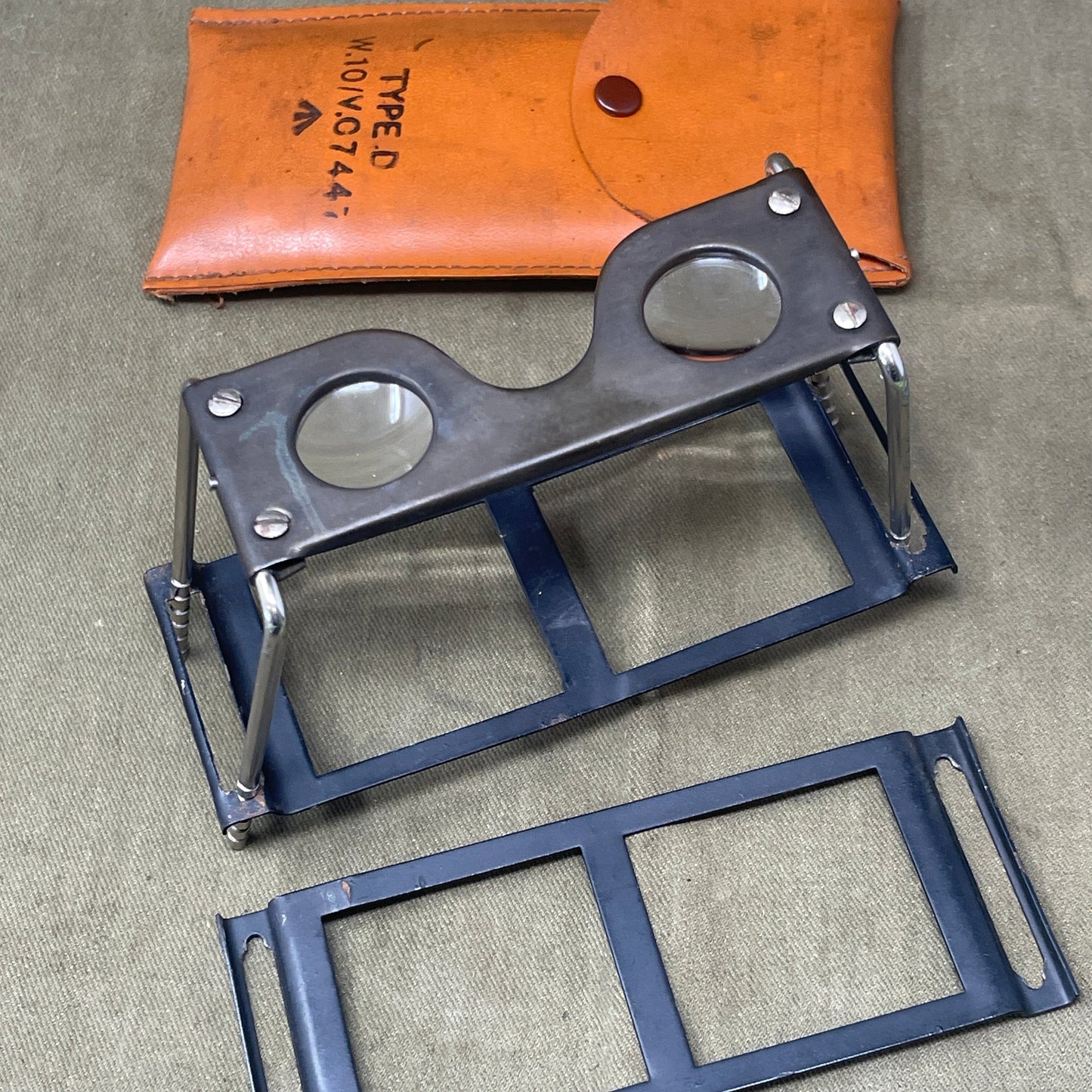
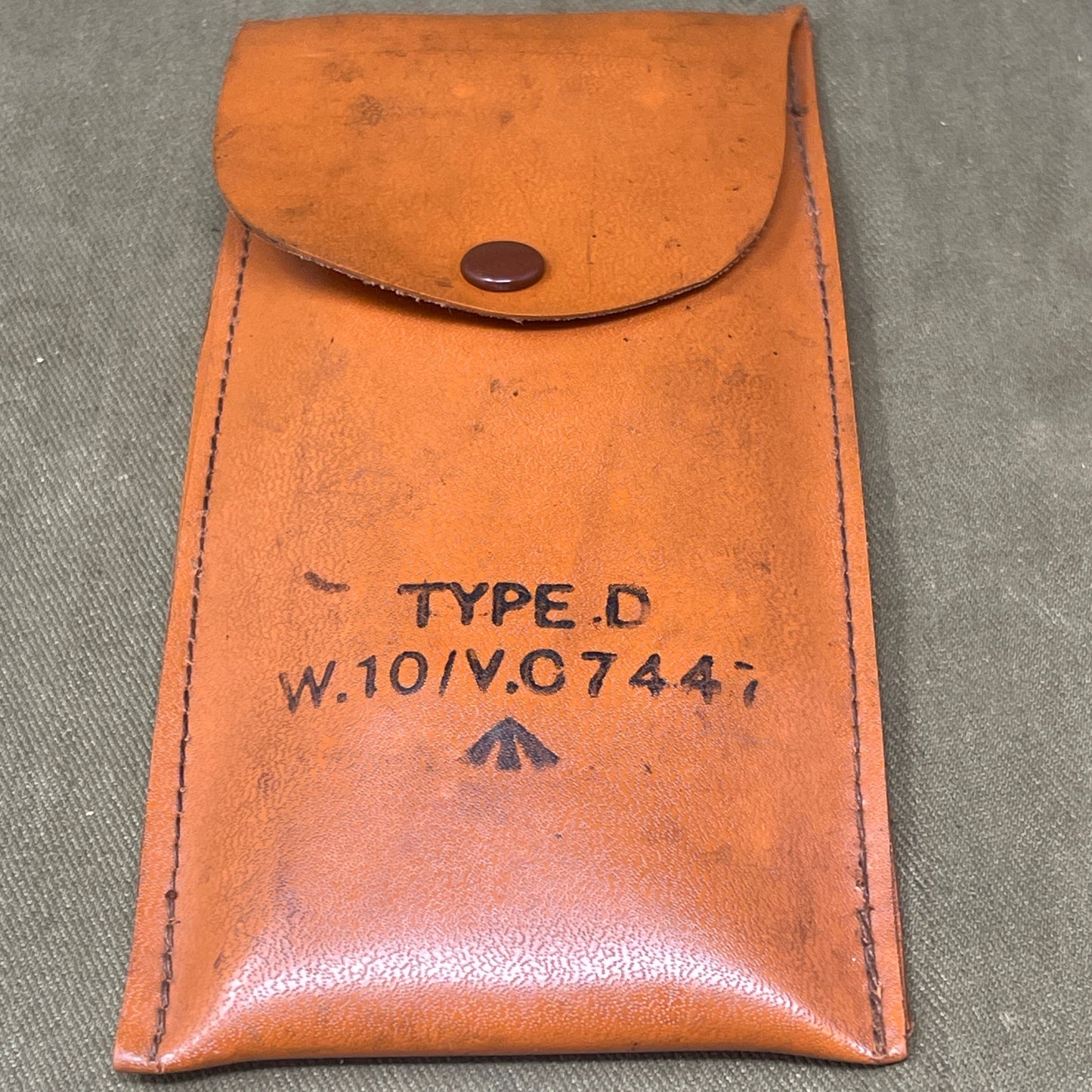
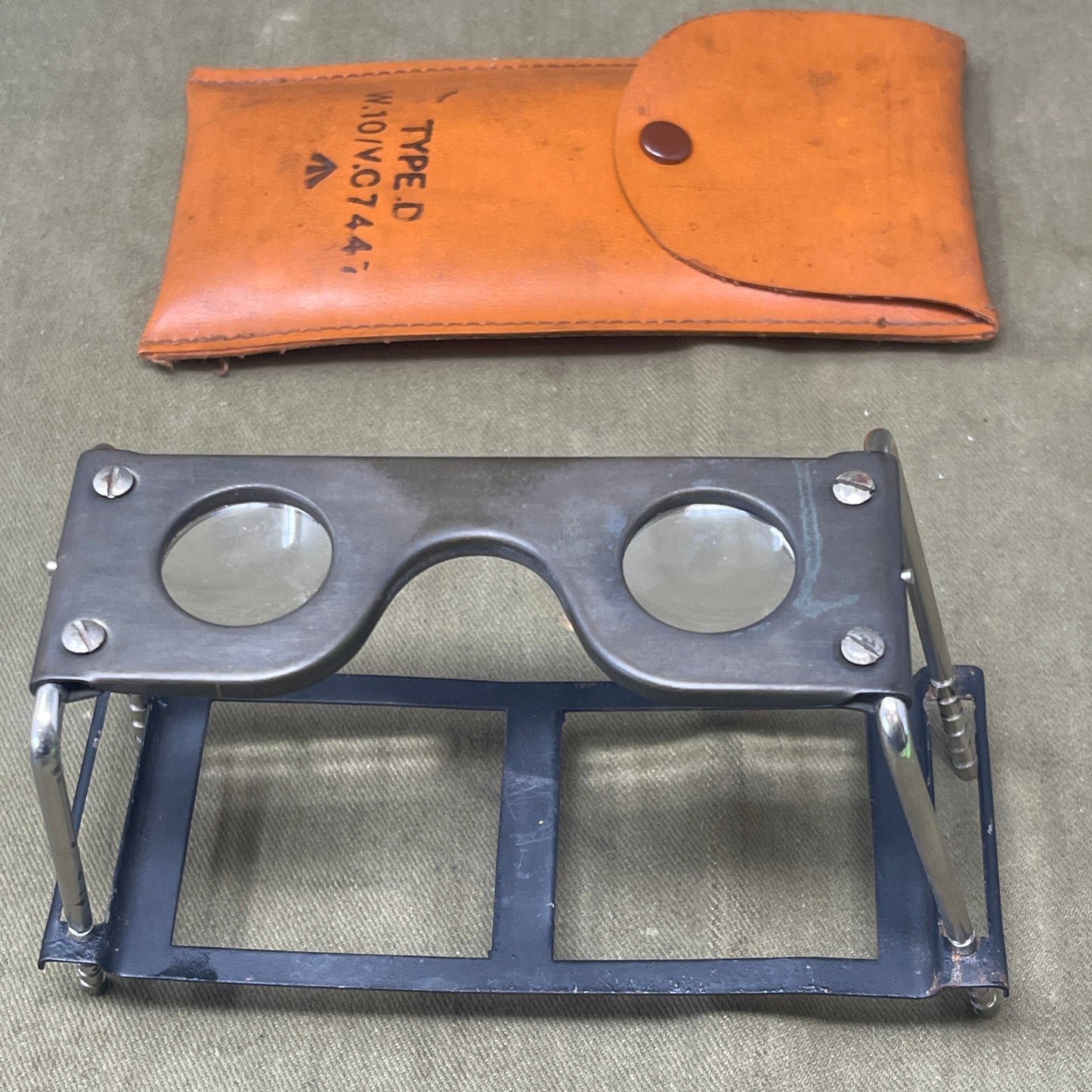
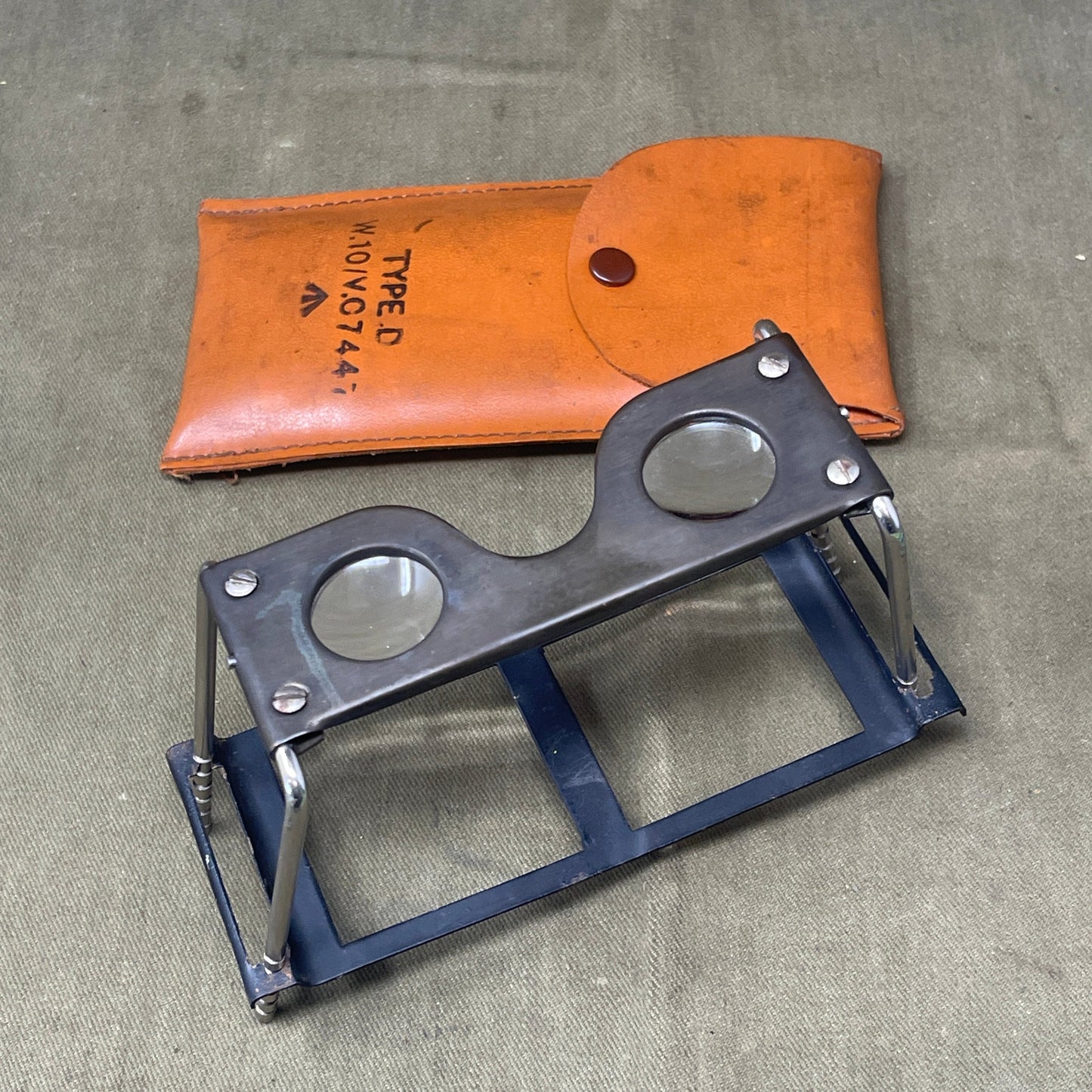
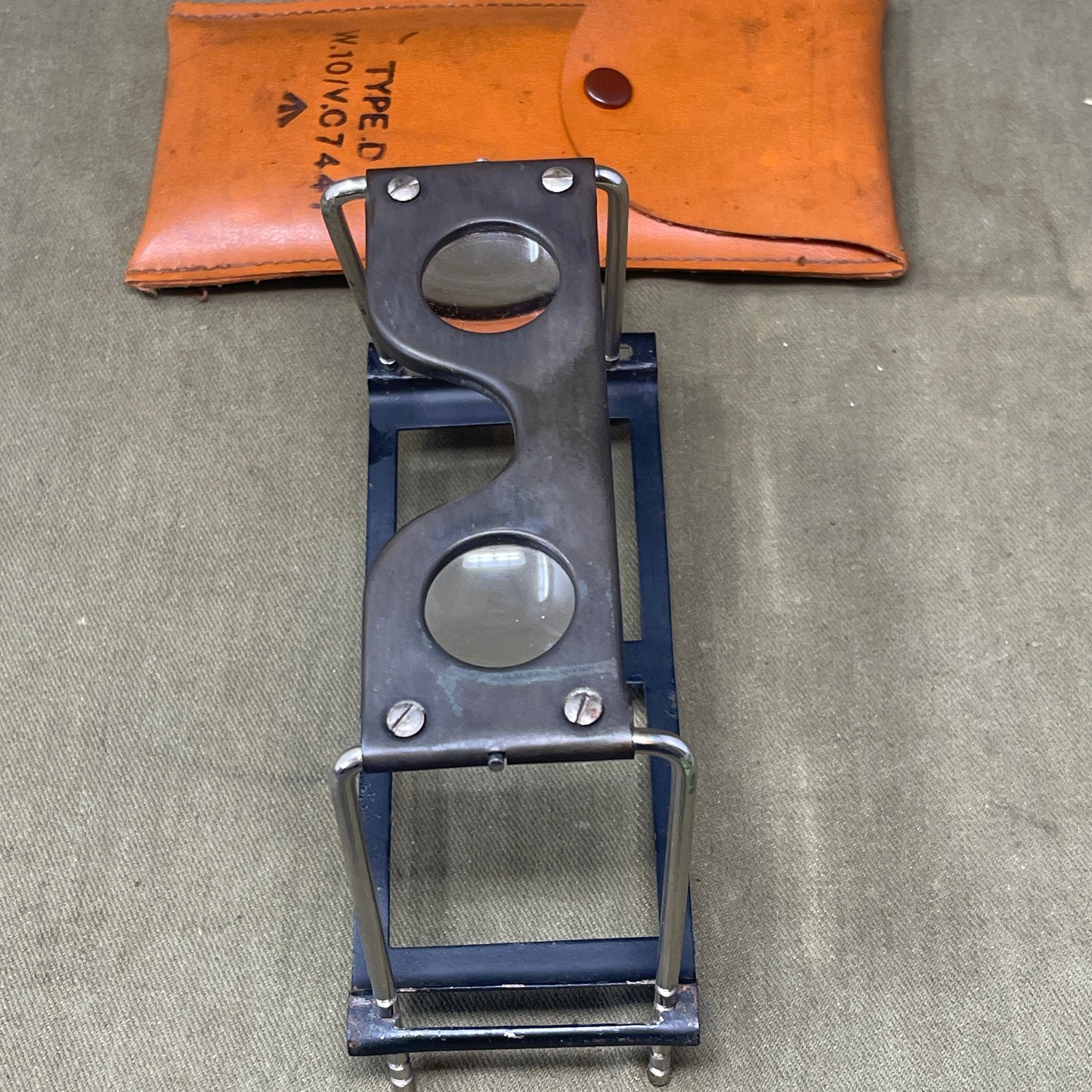
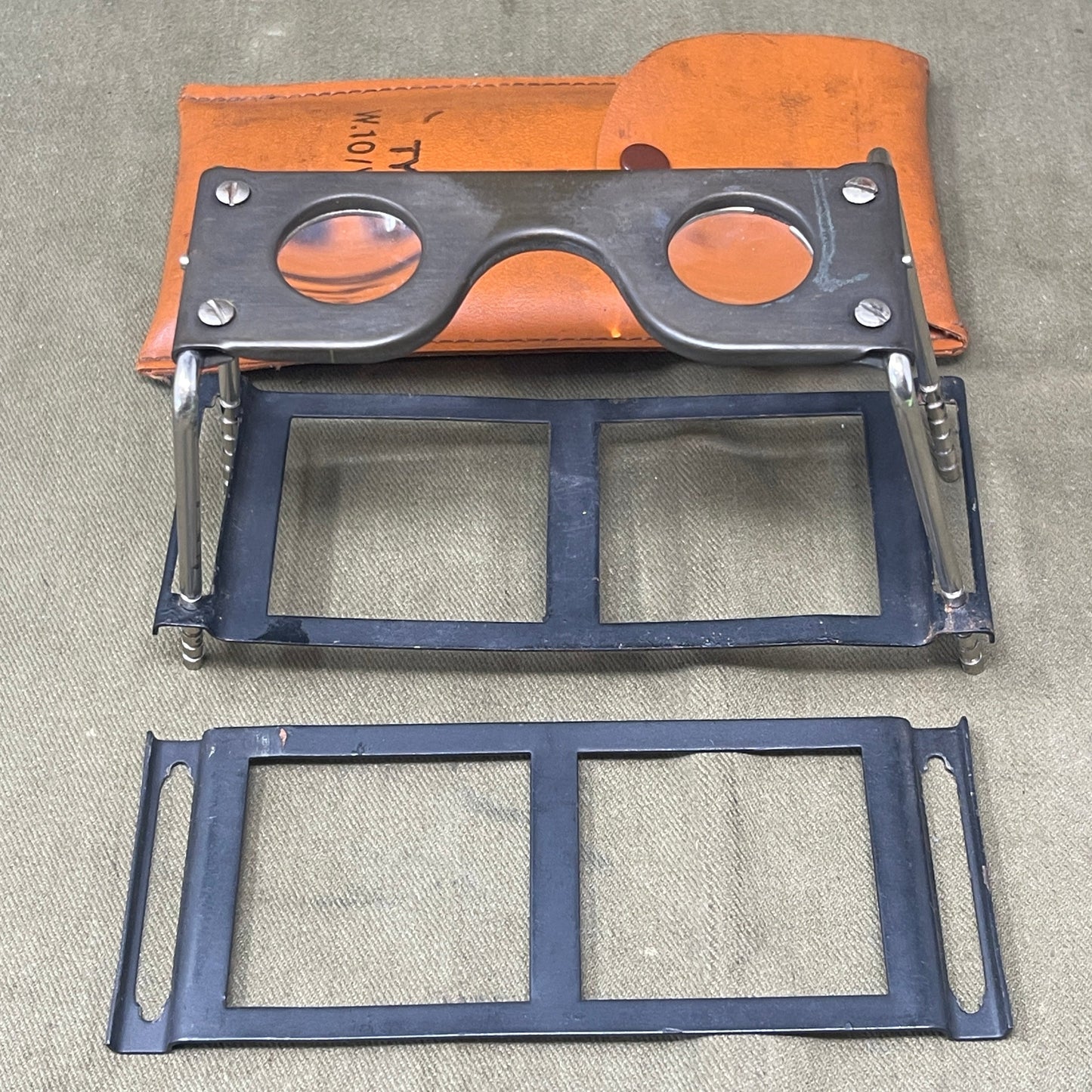
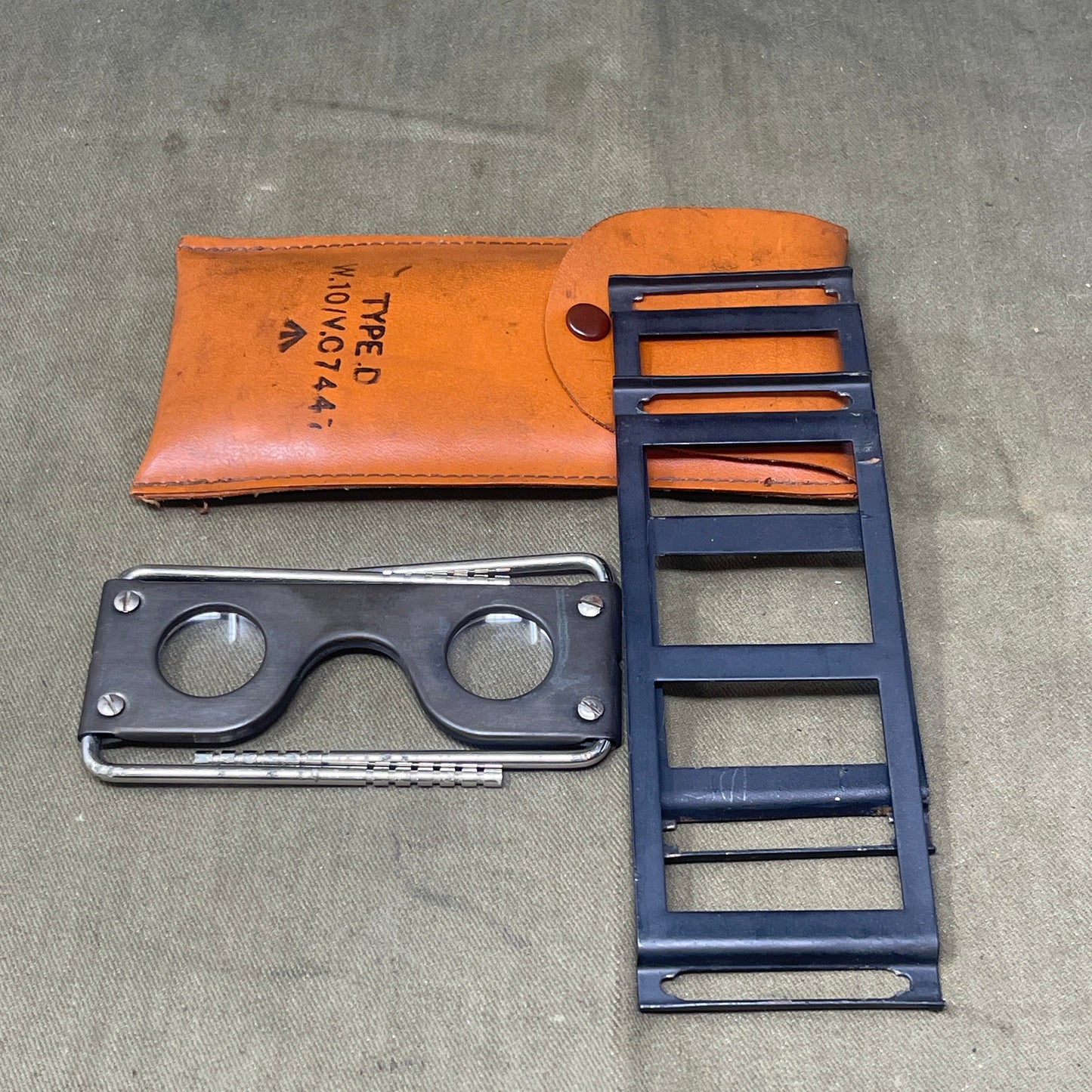
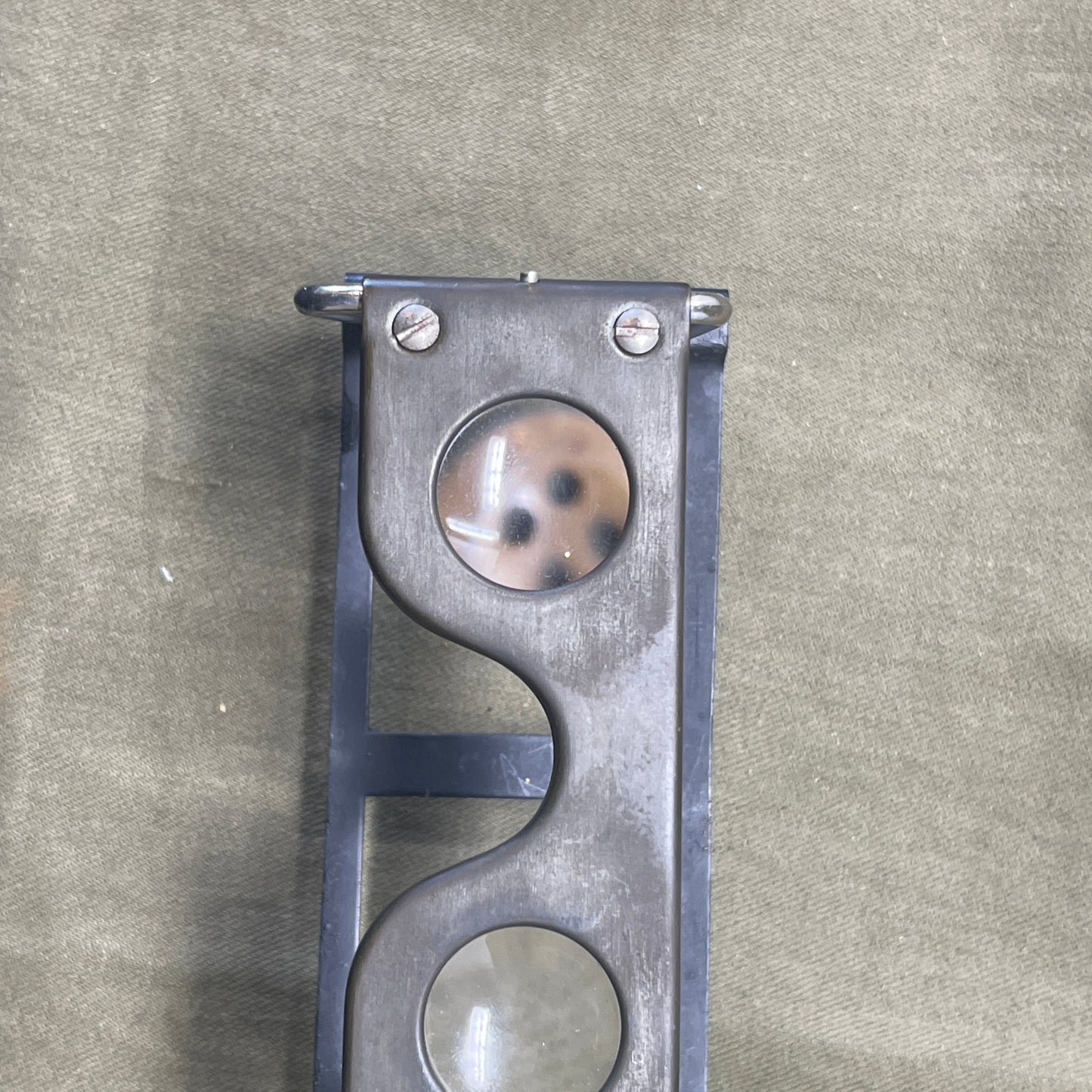
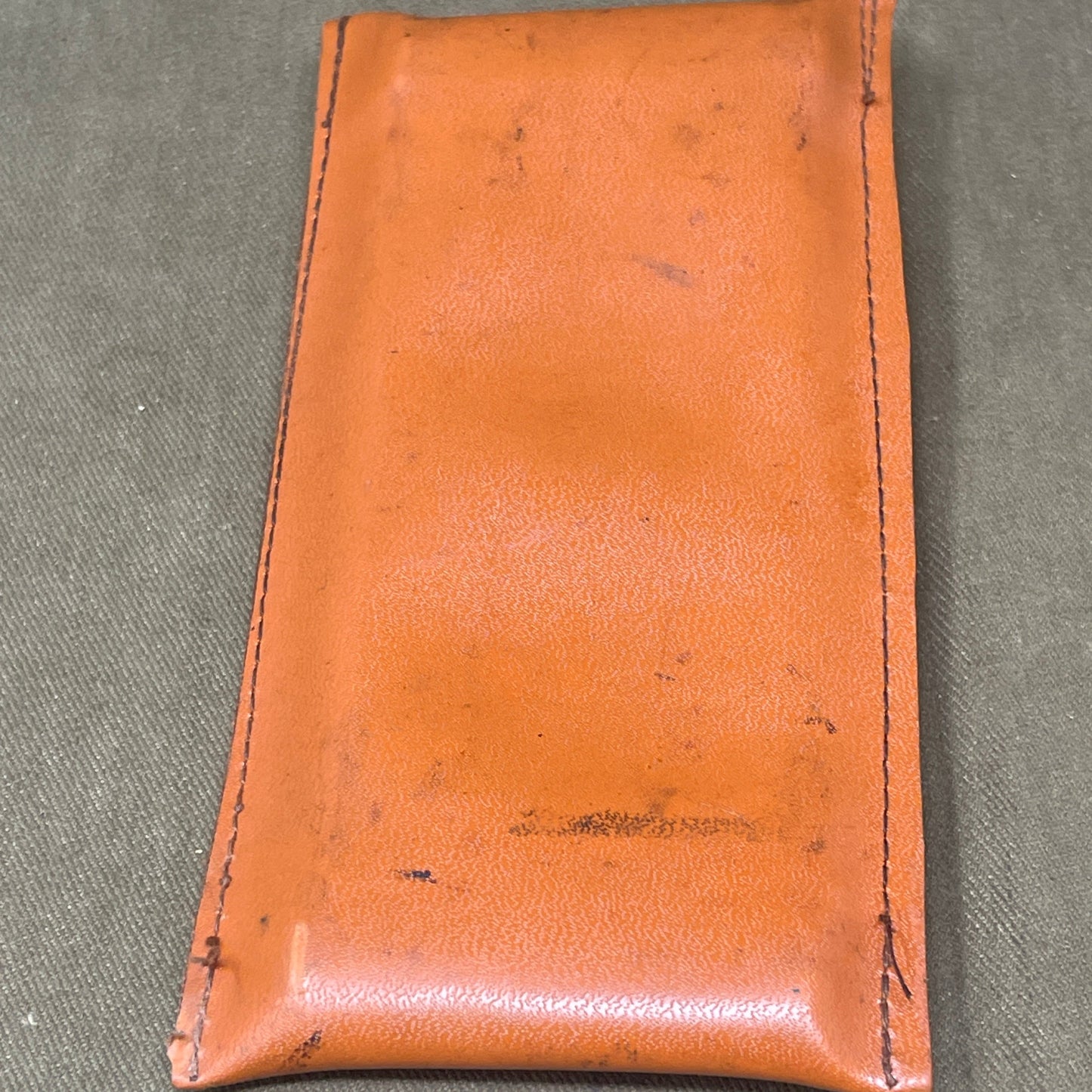
Product Description
The WW2 Air Ministry Stereoscope, Type D Stores Reference 1W.10/V.C747, is a crucial piece of optical equipment used during World War II by photo-reconnaissance staff for the interpretation of aerial photographs. This stereoscope played a vital role in the intelligence-gathering operations of the Royal Air Force (RAF) and other Allied forces.
The stereoscope is designed to provide a three-dimensional (3D) view of aerial photographs, which is achieved by placing two overlapping images taken from slightly different angles under the device. When viewed through the lenses of the stereoscope, the pair of photographs merge into a single 3D image, allowing interpreters to accurately assess the topography, structures, and features of the landscape. This ability to perceive depth was critical in identifying enemy installations, fortifications, and other strategic details that might be missed in a flat, two-dimensional view.
The Type D stereoscope was known for its robust construction and precision optics, typically housed in a durable metal frame with adjustable lenses to accommodate different eye distances. The design allowed for prolonged use without causing eye strain, which was essential given the extensive hours photo-reconnaissance staff often spent analyzing images.
The interpretation of aerial photographs was a highly skilled task, with operators requiring extensive training to identify subtle details such as camouflaged buildings or changes in terrain that could indicate military activity. The accuracy of these interpretations could significantly influence the outcome of military operations, making the stereoscope an indispensable tool in the wartime intelligence effort.
Today, the WW2 Air Ministry Stereoscope, Type D, is a sought-after collector's item, valued for its historical significance and its role in the success of Allied reconnaissance missions during the war. Its legacy underscores the importance of aerial photography and the technological advancements that supported military intelligence during World War II









